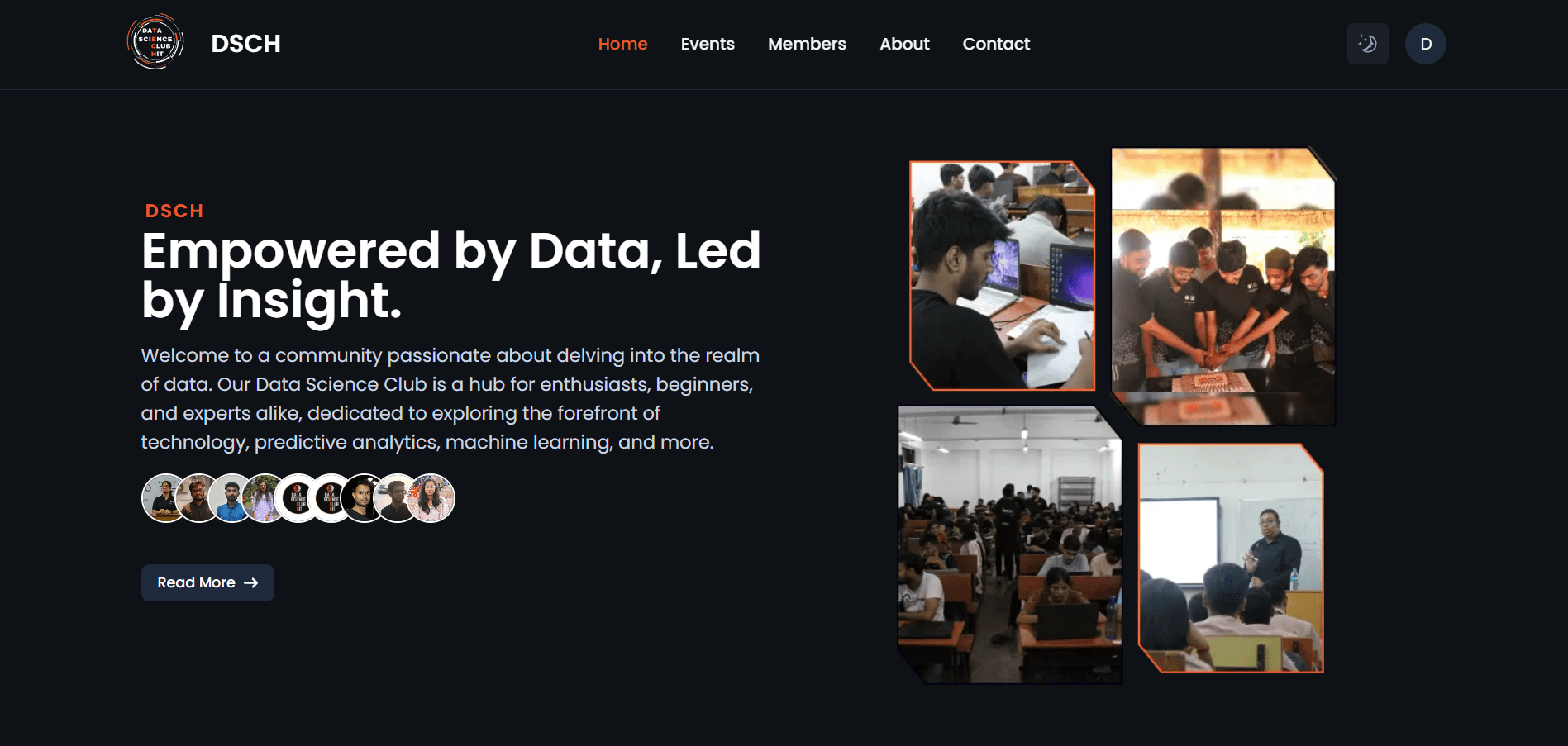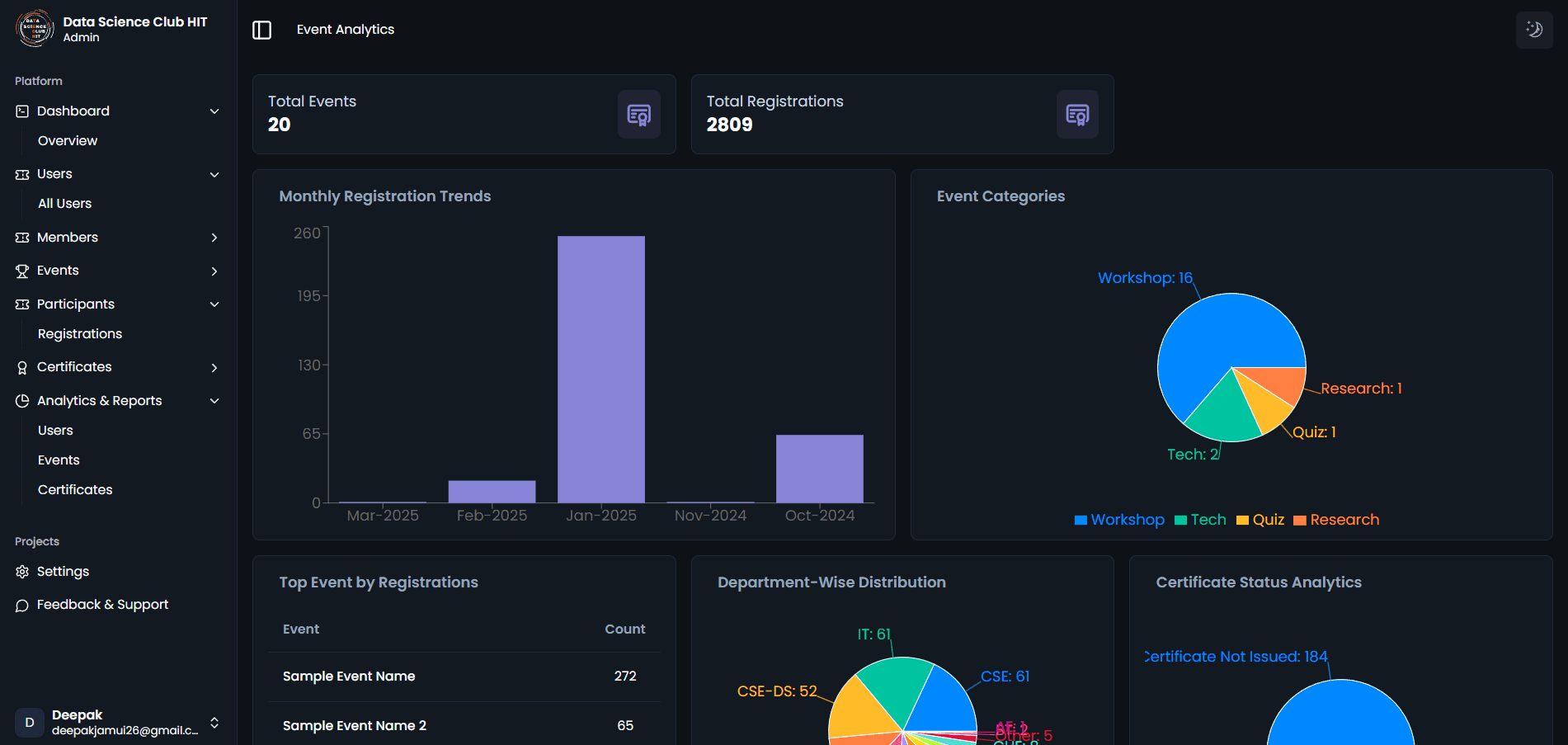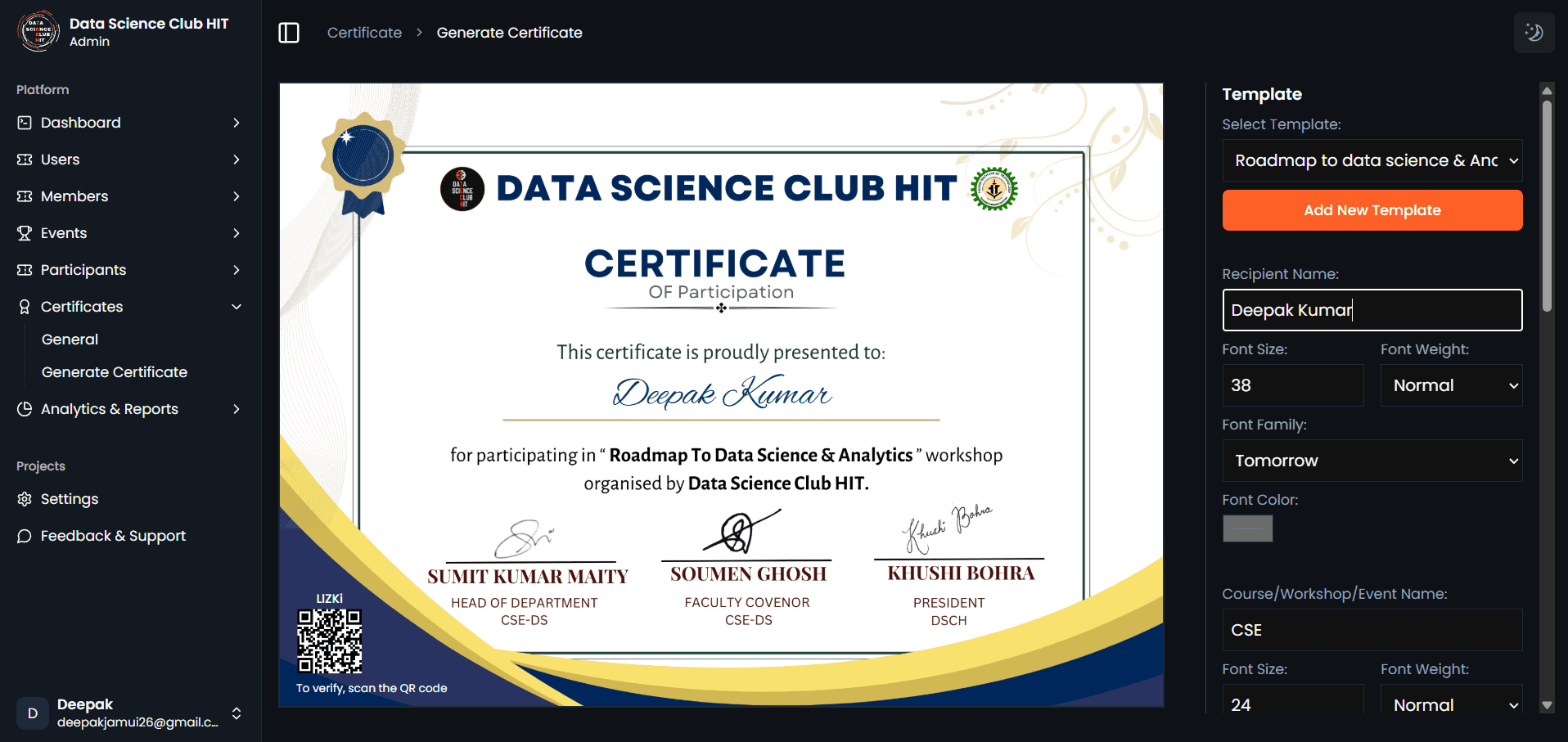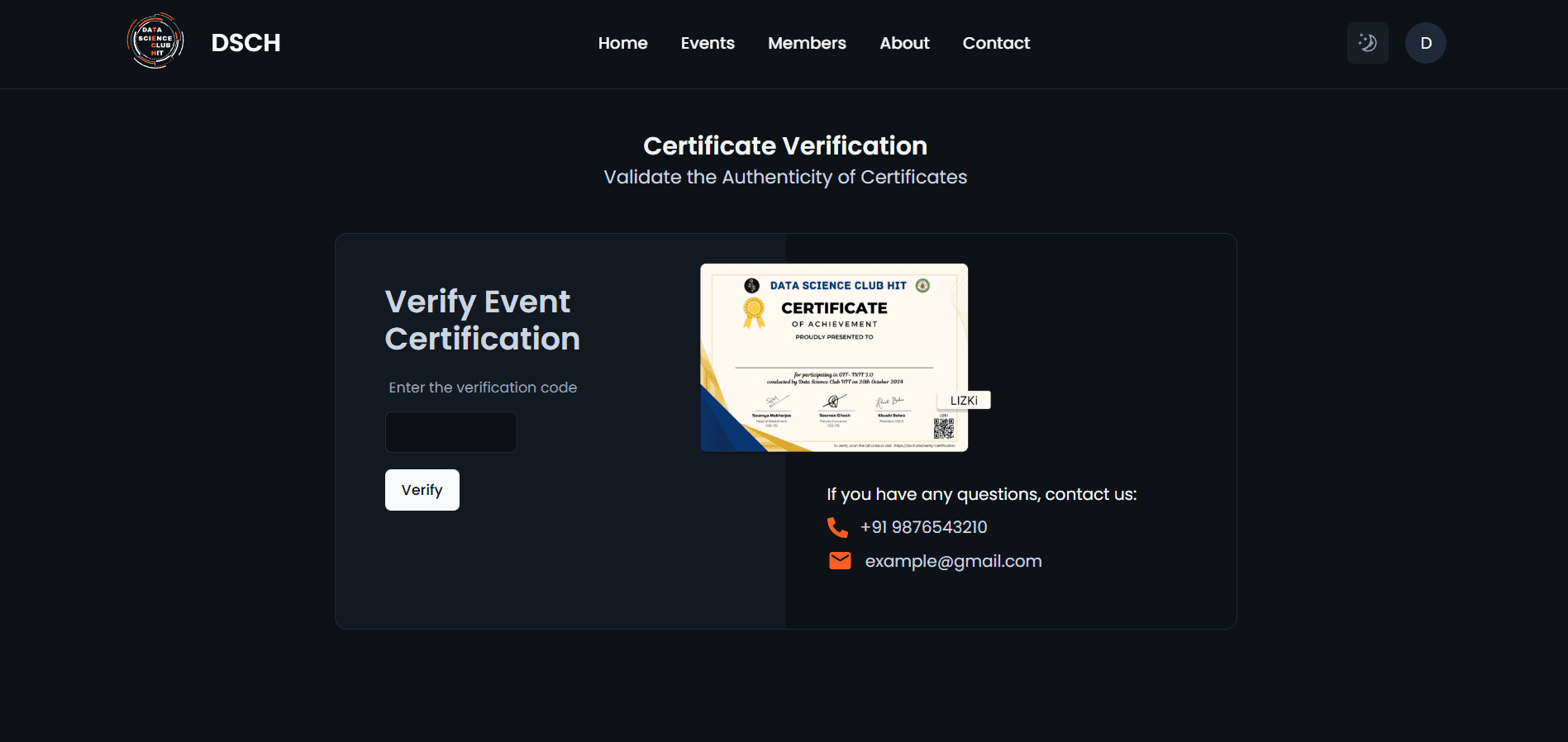
Event Management Platform
Check it outA Next.js-powered platform for the Data Science Club HIT, streamlining event management, registration, and certificate generation with real-time analytics and QR-based authentication.
Full-Stack Developer & Technical Innovator
Data Science Club HIT (Personal Initiative)
Overview
As a technical member of the Data Science Club at HIT, I identified inefficiencies in our event management process—reliance on Google Forms for registrations, lack of analytics for event data, and limited visibility of our club among college students. Additionally, certificate distribution was a tedious manual task with no authentication mechanism. To address these, I built the Event Management Platform, a comprehensive solution using Next.js, Node.js, and MongoDB. This platform lists past and upcoming events, enables seamless student registrations with email confirmations, and provides club information to boost awareness. I also introduced one-click bulk certificate generation with QR code authentication, stored securely on Cloudinary, and automated email delivery via Nodemailer. Deployed on Google Cloud Run with Redis caching, it reduces data retrieval time by 50%, offering a scalable, SEO-optimized, and analytics-driven experience.
Features
- Event Listings: Showcases past and upcoming events with detailed descriptions and schedules.
- Student Registration: In-platform sign-ups with email confirmation via Nodemailer.
- Club Information Hub: Centralized details about the Data Science Club to enhance visibility.
- Bulk Certificate Generation: One-click creation of certificates with unique QR codes for authenticity.
- Automated Email Delivery: Sends certificates with secure Cloudinary links to participants.
- Admin Dashboard: Manages events, members, and real-time analytics for data-driven insights.
- Secure Authentication: JWT-based access for admins and members.
- Performance Optimization: Redis caching cuts data retrieval time by 50%.
- SEO Optimization: Next.js ensures search engine visibility for club events.
Technology Used
- TypeScript: Static typing for robust, maintainable code.
- Next.js: SSR and static generation for SEO and performance.
- React.js: Dynamic, reusable UI components.
- Node.js: Backend runtime for RESTful APIs and certificate logic.
- Express.js: API routing and middleware for server-side efficiency.
- Redux: State management for complex frontend interactions.
- MongoDB: NoSQL database for event, user, and certificate data.
- JWT: Token-based authentication for secure sessions.
- OAuth: Secure third-party login integration for students.
- Redis: In-memory caching for faster data retrieval.
- Nodemailer: SMTP-based bulk email delivery with custom templates.
- Cloudinary: Secure PDF storage for certificates.
- Shadcn: Modern UI components for a sleek, accessible design.
- Zod: Schema validation for reliable data integrity.
- Docker: Containerization for consistent development and deployment.
- CI/CD Pipeline (GitHub Actions): Automated builds, tests, and deployments.
- GitHub Workflow: Streamlined team collaboration and version control.
- Recharts: Data visualization for real-time event analytics.
- Google Cloud Run: Serverless deployment for scalability.
Design Screens





My Contributions
- Problem Identification: Recognized inefficiencies in event management and certificate distribution, driving the project’s vision.
- Full-Stack Development: Built the backend with Node.js, Express.js, and MongoDB, and the frontend with Next.js and React.js.
- UI/UX Design: Designed an intuitive interface for event browsing, registration, and admin management using Redux and CSS.
- Certificate System: Engineered one-click bulk certificate generation with QR codes and automated email delivery.
- Deployment: Deployed on Google Cloud Run with Redis integration for performance.
Challenges Faced
Overcame hurdles like generating unique QR codes for thousands of certificates, optimizing Nodemailer for bulk emails without delays, and integrating Redis caching with Next.js for real-time analytics. Balancing SEO needs with performance in a dynamic platform was a key challenge.
What I Learned
This project sharpened my full-stack skills, from API design and database optimization to Next.js-powered frontend development. I gained expertise in certificate automation, QR code authentication, and cloud deployment, while learning to translate real-world problems into technical solutions.
Future Improvements
Plans include adding a mobile app with React Native, integrating live event tracking with WebSockets, and enhancing analytics with data visualization tools like Chart.js.
Impact
The platform has replaced third-party forms, increased club visibility among students, and simplified certificate distribution, saving hours of manual effort. Real-time analytics now empower the club to make data-driven decisions for future events.
And more, including scalable architecture, secure certificate verification, and performance optimization.